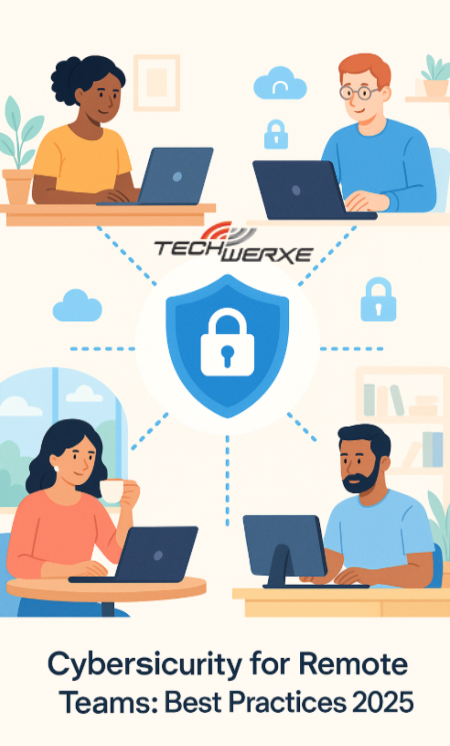
As we navigate deeper into 2025, remote and hybrid work environments continue to dominate across industries. While this shift offers flexibility and global talent access, it also expands the cyber threat landscape. Remote teams are prime targets for cybercriminals, and without the right safeguards, your organization’s data could be just a click away from compromise.
In this post, we’ll explore the latest cybersecurity best practices tailored specifically for remote teams in 2025—helping you stay ahead of evolving threats and regulatory expectations.
1. Zero Trust Architecture Is No Longer Optional
Gone are the days of perimeter-based security. In 2025, Zero Trust has become the gold standard—“never trust, always verify.”
Best Practice:
-
Implement multi-factor authentication (MFA) across all applications and devices.
-
Apply least privilege access controls: only grant employees access to the data and systems they need.
-
Monitor continuously and authenticate user behavior using AI-driven anomaly detection tools.
2. Endpoint Security Must Extend Beyond Laptops
Remote employees use a mix of corporate and personal devices. From smartphones to IoT gadgets, every endpoint can be an entry point.
Best Practice:
-
Use advanced endpoint detection and response (EDR) solutions.
-
Ensure regular software updates and patching schedules are automated.
-
Mandate full-disk encryption and secure configurations for all devices.
3. Secure Collaboration and Communication Tools
With remote work relia
nt on Slack, Zoom, Teams, and shared drives,
communication plat
forms are under constant threat.
Best Practice:
-
Choose platforms with end-to-end encryption and proven security records.
-
Disable unnecessary integrations and plugins that may introduce vulnerabilities.
-
Provide employee training on identifying phishing attempts and deepfake impersonations in video calls.
4. Cloud Security & Shadow IT Governance
As cloud usage increases, so does the challenge of managing “shadow IT”—unauthorized tools and services used without IT oversight.
Best Practice:
-
Use cloud access security brokers (CASBs) to monitor and control data across cloud apps.
-
Regularly audit SaaS tools and ensure compliance with company policy.
-
Adopt secure configurations and backup policies for all cloud-based resources.
5. Continuous Cybersecurity Awareness Training
Human error remains the leading cause of breaches. In 2025, training isn’t an annual event—it’s an ongoing process.
Best Practice:
-
Use microlearning platforms that deliver short, scenario-based lessons weekly.
-
Gamify learning with quizzes and simulated phishing attacks.
-
Tailor training to roles—developers, HR, and executives face different threats.
6. Incident Response Plans for Remote Environments
If a breach occurs, will your remote teams know what to do?
Best Practice:
-
Create and distribute a remote-specific incident response plan.
-
Conduct tabletop exercises simulating breaches involving remote workers.
-
Ensure legal, PR, and compliance teams are integrated into the response workflow.
7. Regulatory Compliance Is Growing More Complex
From GDPR and HIPAA to new AI regulations, compliance is evolving. Remote teams must follow security policies across borders.
Best Practice:
-
Use compliance management platforms that track regulatory changes.
-
Implement geo-aware security policies and data localization practices.
-
Maintain documentation and audit trails to prove compliance across jurisdictions.
Conclusion
Remote work is here to stay, but so are the cyber risks. In 2025, securing a remote team requires proactive strategy, modern tools, and employee engagement. With the right practices in place, remote teams can be both productive and secure—no matter where in the world they log in from.
Need help securing your remote workforce?
Contact our cybersecurity experts today for a free consultation and remote risk assessment.
